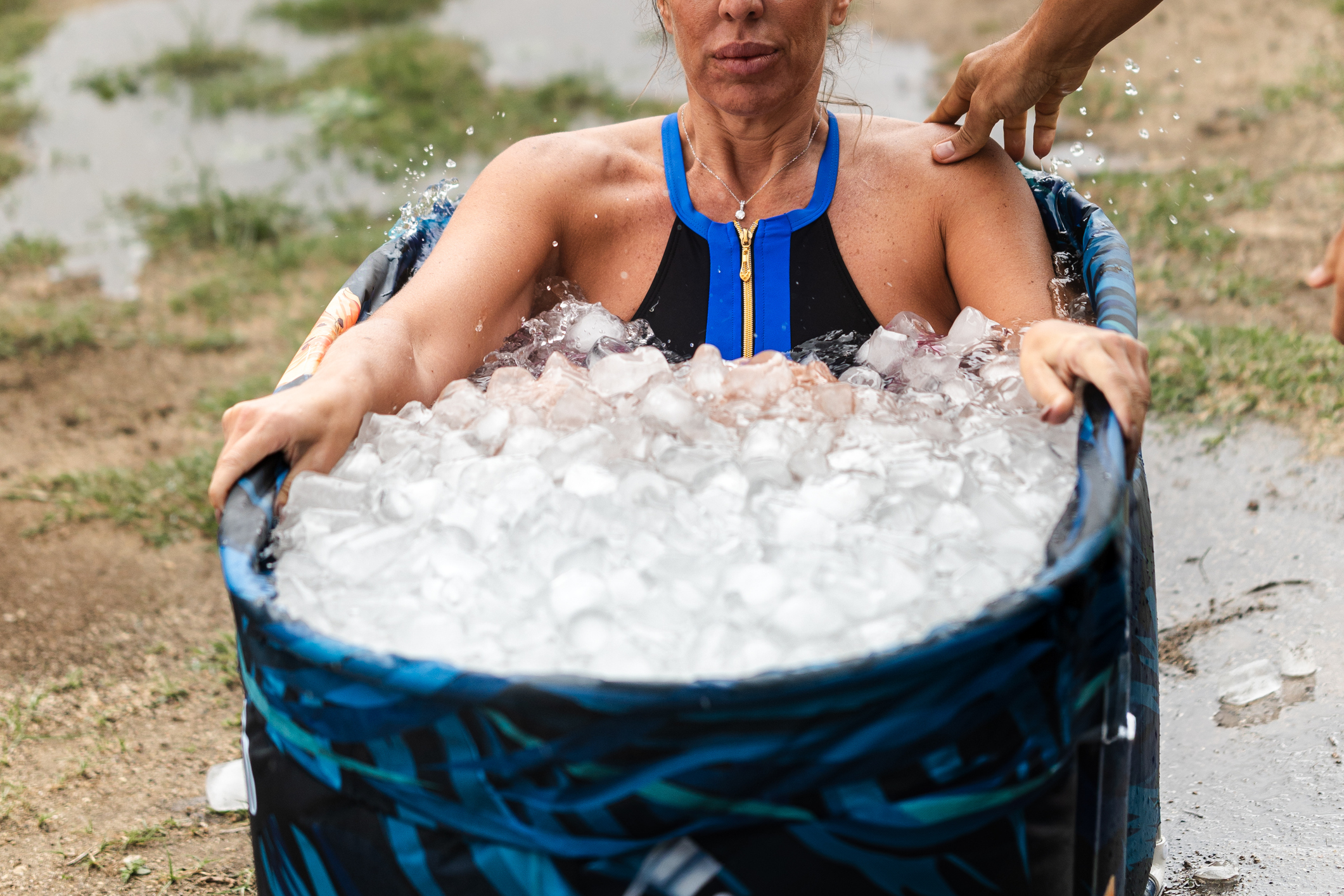Health
Exploring the Benefits of Cold Therapy for Recovery and Wellness
Published
48 minutes agoon
By
IQnewswire
Feeling sore or tired after working out or a long day is pretty common. I know that ache all too well; did you know cold therapy can help muscles recover faster? In this post, I’ll share how simple cold methods can ease pain and boost your wellness.
Want to see how a little chill can make life better? Keep reading for some cool facts!
Key Takeaways
- Cold therapy methods like ice baths, cryotherapy chambers, cold showers, and compresses help reduce pain and swelling. One study from the British Journal of Sports Medicine found that cold immersion can cut muscle soreness by almost 20% in the first four days after exercise.
- Using ice baths or cold plunges helps muscles heal faster. Many athletes use these methods to recover quickly from hard workouts or injuries. Experts like Dr. Stacy Sims call cold plunges a “reset button for your muscles.”
- Cold exposure may improve sleep quality and boost mood. People who use cold therapy often feel calmer, more awake, and less stressed.
- Cold therapy carries risks such as hypothermia, heart stress, skin rashes, or breathing problems—especially for those with health conditions. It is important to limit the time spent in cold water (no more than 10 minutes) and check with a doctor first if needed.
- Simple forms of cold therapy—like using ice packs at home—are easy ways to support recovery without medicine. Regular practice may also strengthen the immune system over time.
Types of Cold Therapy
Cold therapy uses different methods to help the body heal and feel better. Some ways are quick, while others last longer—each offers its own benefits for recovery and wellness.
Many people find that creating a DIY cold plunge is an effective way to incorporate cold therapy into their recovery routine without the need for expensive equipment.
Ice Baths and Cold Plunges
Sitting in ice baths or cold plunges drops my body temperature fast. I usually fill a tub with water at about 50 to 59 degrees Fahrenheit. Athletes and trainers use this method for muscle recovery and inflammation reduction after heavy workouts or sports injuries.
A study from the British Journal of Sports Medicine found that cold immersion can cut muscle soreness by almost 20 percent in the first four days after exercise. I notice an immediate sense of wakefulness as soon as I get in, even though the shock feels intense at first. Staying inside for more than ten minutes is not safe, so I always keep track of time.
Some experts say regular sessions may also boost circulation and help strengthen my immune system over time. Cold plunges are like a reset button for your muscles, says Dr. Stacy Sims, an exercise physiologist. Using ice baths gives quick pain relief without medicine, making it easier for me to get back to daily activities or exercise routines faster.
Cryotherapy Chambers
Cryotherapy chambers are a popular way to use cold therapy. I step into a chamber filled with super chilly air. The temperatures can drop to as low as -200 degrees Fahrenheit. It feels like stepping into winter, but just for a few minutes.
This quick exposure helps my body recover faster from workouts. Cold air reduces inflammation and eases pain in sore muscles. I often feel refreshed after each session, ready to take on more activities.
Some people even say it boosts their mood and promotes better sleep.
Cold Showers
Cold showers are a simple way to use cold therapy. I find them refreshing, especially after a workout. The chilly water can help reduce inflammation and relieve pain in my muscles.
It feels good to step into the cold shower, even when it’s hard at first.
My mood often lifts after a cold shower. It wakes me up and clears my mind. Some studies suggest that this practice may also improve sleep quality over time. Regularly using cold showers seems like an easy way to boost wellness without much effort!
Cold Compresses
Cold compresses are simple yet effective tools for recovery. I often use them to help with aches and pains. These compresses can come in many forms, like ice packs or frozen towels.
They are great for reducing inflammation and providing pain relief after a tough workout.
Applying a cold compress is easy. Just place it on the affected area for about 15-20 minutes. This helps calm swelling and speeds up muscle recovery. I find that using cold compresses also enhances my wellness after exercise.
Key Benefits of Cold Therapy
Cold therapy has many great benefits for our bodies and minds. It helps cut down inflammation and pain, speeds up muscle recovery, improves sleep quality, and even boosts mental health.
If you’re curious about how cold therapy can help you feel better, keep reading!
Reduces Inflammation and Pain
Cold therapy is great for reducing inflammation and pain. After an intense workout, muscles can swell and hurt. I have found that ice baths or cold compresses help soothe this discomfort. The chilly temperature narrows blood vessels, which lowers swelling. It also numbs the area, providing quick relief from sharp aches.
Using cold therapy has made my recovery faster. Research indicates that athletes who use cryotherapy experience less pain after exercise. This means I can get back to training sooner without the nagging soreness holding me back. It seems clear that cold exposure offers real benefits for both injury recovery and everyday wellness.
Enhances Muscle Recovery
After discussing how cold therapy reduces inflammation and pain, let’s talk about its role in muscle recovery. Cold therapy helps my muscles recover faster after workouts. I feel less soreness the next day.
Ice baths or cold plunges can really speed up this process for me. They help reduce swelling and boost blood flow. Better circulation means more nutrients reach my tired muscles, helping them repair quickly.
Pain relief also plays a part; less pain makes it easier to get back to exercising sooner. I find that using cold compresses feels refreshing and quickens my recovery too!
Improves Sleep Quality
Cold therapy helps improve sleep quality. I find that using cold exposure, like ice baths or cold showers, can make it easier to drift off at night. The drop in body temperature signals my brain that it’s time to relax.
Studies show that people sleeping in cooler rooms often fall asleep faster and wake up less during the night. Cold therapy also reduces stress and anxiety, making me feel calm before bedtime.
With better sleep, I recover quicker from workouts and feel more energized during the day.
Supports Mental Health and Clarity
Cold therapy helps boost mental health and clarity. After a cold bath or shower, I often feel refreshed. It sharpens my focus and lifts my mood. Studies show that cold exposure can reduce stress levels too.
This occurs because it affects the body’s stress response.
Employing this method can help with anxiety as well. Regular cold immersion promotes better wellness. The cool temperatures wake me up and make me feel alive. My mind feels clear, ready to take on the day!
Potential Risks of Cold Therapy
Cold therapy can have risks, just like anything else. Some people might get too cold and face hypothermia or heart issues. Others may have skin reactions or breathing problems. It’s good to be careful and know your limits before trying it out….
Hypothermia
Hypothermia can happen when the body gets too cold. This condition occurs if I spend too much time in very cold water or air. Symptoms include shivering, confusion, and tiredness. It’s serious because it affects how my body works.
While cold therapy has many benefits, it’s important to be careful with exposure. Staying safe during these practices helps me enjoy all the good effects without risk of hypothermia.
Next up are some important cardiovascular considerations.
Cardiovascular Considerations
Cold therapy can impact the heart. Some people may feel stressed when exposed to cold temperatures. For those with heart problems, this stress could cause issues. Cold exposure contracts blood vessels, which might raise blood pressure.
I always check with my doctor before trying cryotherapy or ice baths, especially if I have any heart conditions. Staying safe is key while seeking recovery benefits like inflammation reduction and muscle recovery from cold immersion.
Skin and Respiratory Issues
Skin and respiratory issues can happen with cold therapy. Ice exposure might irritate the skin or cause rashes. I often recommend watching for signs like redness or itching. If this occurs, taking a break from cold therapy is wise.
Breathing difficulties may also arise in some people during cryotherapy sessions. Cold air can make it hard to breathe comfortably if you have asthma or other lung conditions. Staying alert and knowing my limits helps me enjoy the benefits while avoiding problems like these.
Conclusion
Cold therapy offers many benefits for recovery and wellness. From ice baths to cold showers, each method helps in its own way. I have felt better muscle recovery and less pain after using these techniques.
Sleep has improved too; it’s a nice bonus! Trying cold therapy might be just what you need for better health and well-being.

How Dental Products Are Evolving to Improve Patient Comfort
Modern vs. Traditional: Custom Home Design Trends in Austin for Luxury Buyers

Why Earrings Remain a Staple in Jewelry Collections Everywhere

Why Collectible Building Toys Remain Popular Across Generations

Exploring the Benefits of Cold Therapy for Recovery and Wellness

Meet Jeffrey Brezovar: Model, Photographer, and Milo Manheim’s Dad

The Story of Holly Revord, Raegan Revord’s Loving and Supportive Mother

Who Is Susan Anne Povich? Meet Maury Povich’s Daughter and Business Star

Customer Experience (CX): Strategies, Benefits, and Measurement

Marisela Vallejos Felix: Life After Losing Chalino Sánchez’s Wife and Son

Curious About JOI Database? Read This First Before You Click Anything

Should You Use Wooflix in 2025? Honest Review and Best Alternatives

ECMISS: The Intelligent System Behind Smarter Everything

Where Is Noelle Watters Now? Jesse Watters’ Ex-Wife’s Life After Divorce

Is F2Movies Safe to Use? The Truth Nobody Tells You

Who Is Marlene Knaus? The Untold Story of Niki Lauda’s First Wife

Swizz Beatz Net Worth 2025: How Rich Is Alicia Keys’ Husband Now?

Who Is Dorothée Lepère?: All About François-Henri Pinault’s First Wife

Jacqueline Bernice Mitchell: The Inspiring Story of Jerry Rice’s Ex-Wife

Where Is Anne Steves Now? The Truth About Rick Steves’ Ex-Wife

How Dental Products Are Evolving to Improve Patient Comfort
Modern vs. Traditional: Custom Home Design Trends in Austin for Luxury Buyers

Why Earrings Remain a Staple in Jewelry Collections Everywhere

Why Collectible Building Toys Remain Popular Across Generations

Exploring the Benefits of Cold Therapy for Recovery and Wellness

Meet Jeffrey Brezovar: Model, Photographer, and Milo Manheim’s Dad

The Story of Holly Revord, Raegan Revord’s Loving and Supportive Mother

Who Is Susan Anne Povich? Meet Maury Povich’s Daughter and Business Star

Customer Experience (CX): Strategies, Benefits, and Measurement

Marisela Vallejos Felix: Life After Losing Chalino Sánchez’s Wife and Son
Categories
Trending
-

 Entertainment3 months ago
Entertainment3 months agoCurious About JOI Database? Read This First Before You Click Anything
-

 Entertainment3 months ago
Entertainment3 months agoShould You Use Wooflix in 2025? Honest Review and Best Alternatives
-

 Technology3 months ago
Technology3 months agoECMISS: The Intelligent System Behind Smarter Everything
-

 Celebrity2 months ago
Celebrity2 months agoWhere Is Noelle Watters Now? Jesse Watters’ Ex-Wife’s Life After Divorce
